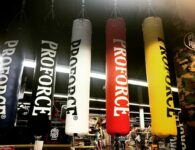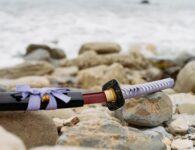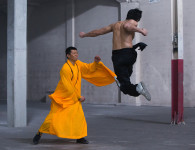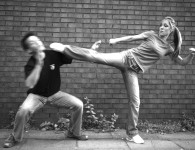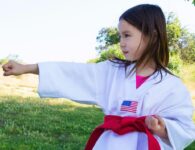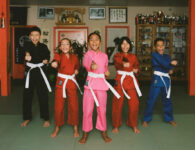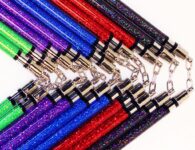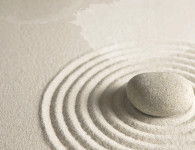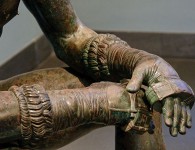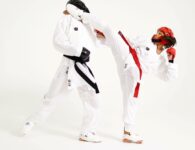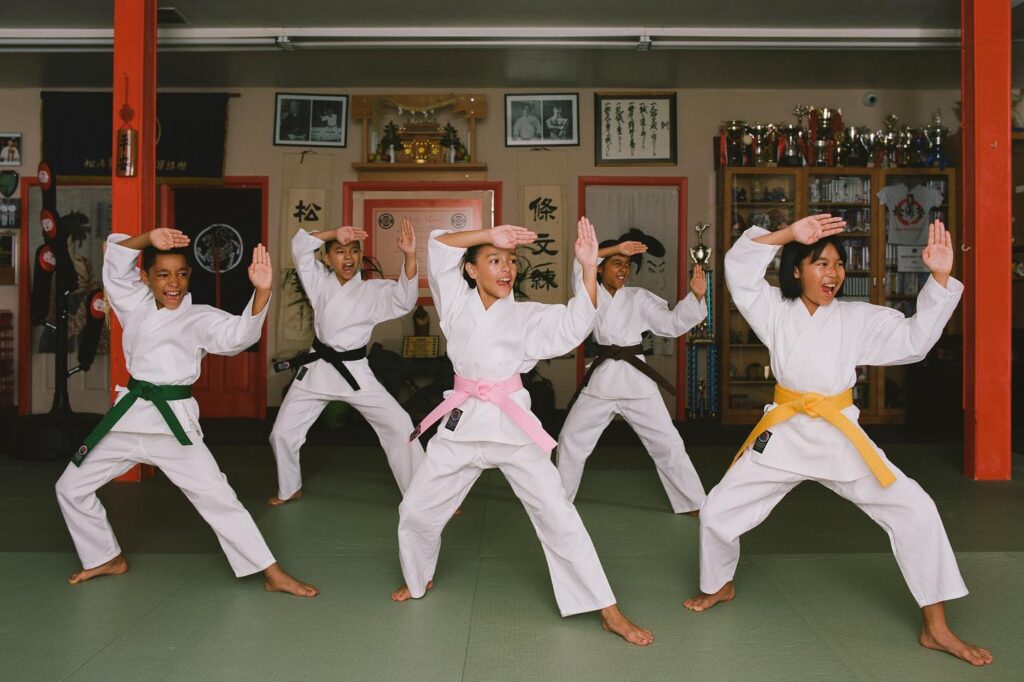
There’s one big thing that starting your own karate dojo or adding classes to an existing martial arts facility have in common with building a boxing gym: it still comes down to great instructors and great equipment.
Employing good karate instructors plays in an important role in attracting students and fostering the kind of environment that keeps them coming back. And providing the highest quality martial arts equipment plays a very important role in attracting and retaining your staff and students. If you want the best, you’ll need to give them the best.
Beyond that, building a karate dojo becomes more sports-specific. A karate dojo will probably require fewer big pieces of martial arts equipment than most martial arts gyms dedicated to striking disciplines. But it will need more gear than gyms that focus on other arts with matwork components. Basically, you won’t need to think about rings or cages when you’re choosing the best equipment for your karate dojo. But you’re going to need a lot of space, the right mats, excellent target training equipment, and the safest sparring gear.
Figuring out what makes the best karate gear and how much of it you’ll need can be a challenge. So we’ve put together this guide to help you figure it out. We’ll look at all of the pieces of equipment you’ll need to make your dream dojo, including suggestions for karate classes, sparring sessions, and optional cross-training equipment ideas. Here’s what to keep in mind when you’re choosing the best equipment for your karate dojo:
Technique and Conditioning Training
This is the essential gear you’ll need to offer the best training possible.
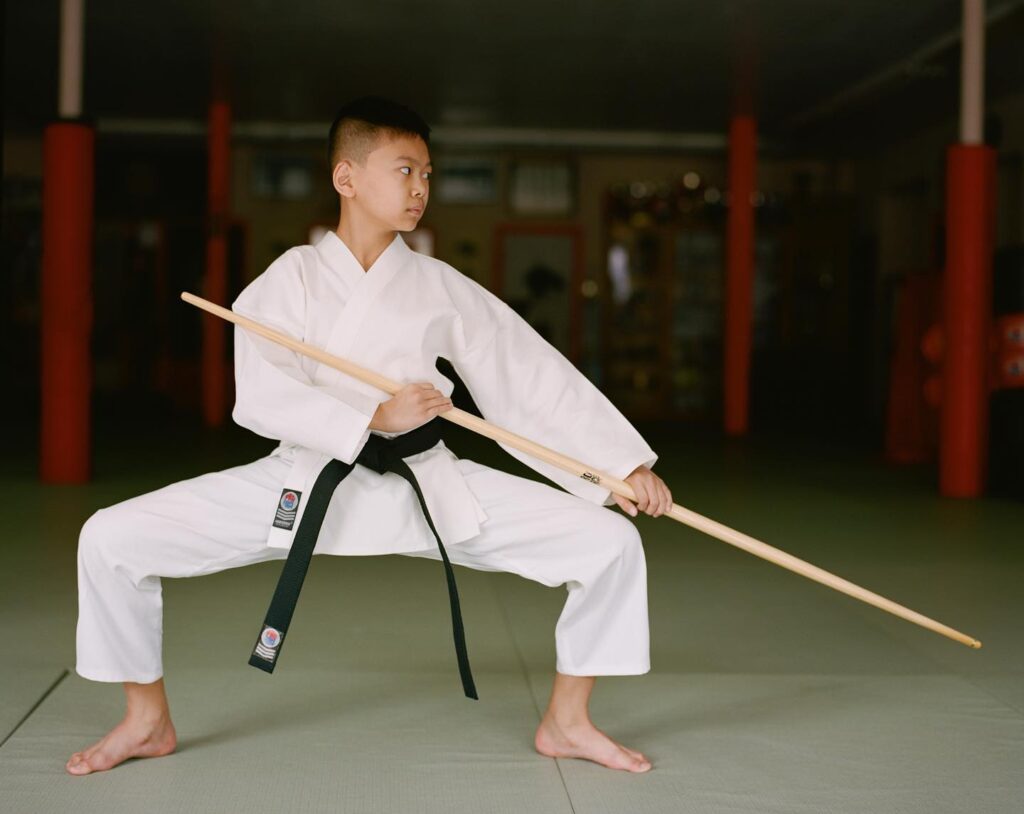
Mats:
Think of your mat space as the foundation of your karate dojo. Choosing the appropriate mats for your space is building a solid and supportive base for all of the training that will happen there. Good mats will provide comfort and safety to your students, and allow for the right ease of movement during their training and sparring.
Training on hard and/or slippery floors significantly increases a karateka’s chances of injury. It can also negatively impact the quality of their overall training. With the right mats, you’ll be able to support your clients and staff’s health and their performance.
High density foam mats with a smooth, non-slip surface are the best choice for a striking martial art like karate. Whether a martial artist trains in soft shoes or barefoot, this type of mat will allow for proper footwork while preventing slips and injuries. It will also support athletes when they are engaging in higher impact moves.
Punching Bags:
Most people probably wouldn’t associate punching bags with karate. But this classic piece of boxing and kickboxing gear can be very beneficial for karate training and is a great idea to keep in mind when you’re choosing the best equipment for your karate dojo. Especially if you’re building a dojo that doesn’t include a lot of traditional Okinawan training tools.
Karate practitioners can use punching bags to improve their breath control and cardio conditioning, fine tune techniques, work on core stability and balance, and grow their striking power. In terms of power development, a punching bag can actually be used as a substitute for a traditional karate tool called the makiwara.
Punching bags are an excellent piece of martial arts gear to provide for open mats and supplementary training. If you have space for them in your dojo, you can provide your students with an excellent tool that can be incorporated into classes and used by individual students outside of their structured training session times.
Target Pads:
Of course, the most important martial arts gear that you’ll need for striking technique training in a karate dojo are target pads. Like punching bags, target pads allow martial artists to work on their breathing, cardio conditioning, core stability, and balance. They don’t offer the same power building potential, but they provide another part of training and development that’s just as important, if not more: dynamic feedback.
When a martial artist strikes or kicks at one of these cushioned pads, they’re learning how it feels for their strikes to land, and how to respond to moving targets. When a student holds them, they’re learning valuable lessons about being on the other end of strikes that will be valuable if and when they chose to spar.
Target pads comes in a number of sizes and styles. Investing in a variety of target pads will ensure that you have the proper equipment to cater to every age, size, and skill level.
Sparring Gear
Many martial artists will prefer to use their own sparring gear, especially as they get more serious about semi and full contact sparring. But it’s always a good idea to keep the sparring aspect of training in mind when you’re choosing the best gear for your karate dojo. Beginners who are curious about sparring will probably want to try it out for themselves before they invest in gear. Having communal gear on hand will keep them protected and help them to feel more safe and confident as they test the waters. Karate schools keeping extra gear around is also helpful for more seasoned martial artists, because we all forget to pack our gear at some point in our careers.
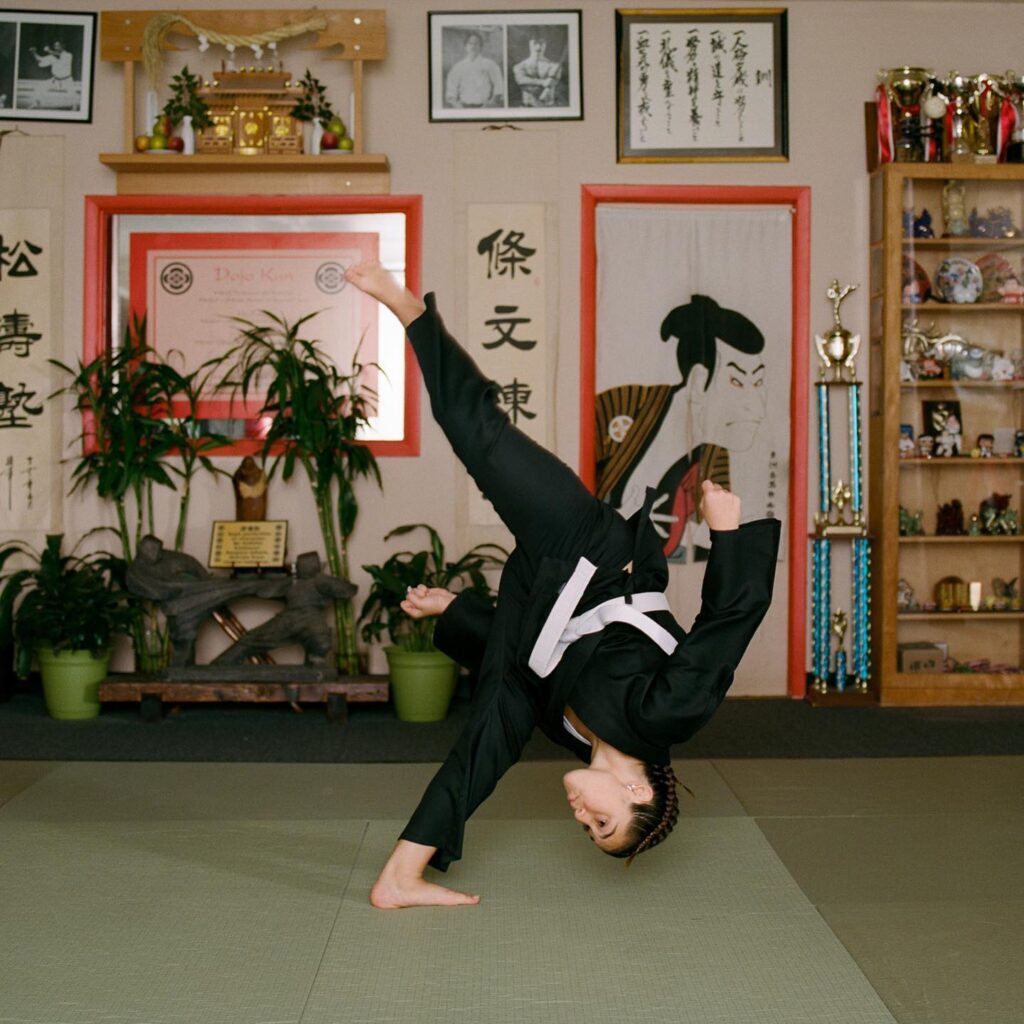
Headgear:
Head guards specially designed for karate is a little lighter than classic boxing heardgear. It’s been developed that way to better accommodate karate-specific head movement during training. Beyond that, though, its purpose is very similar. It protects your head and face from damage during training. In addition to the protection that headgear provides, some students find that it gives them more confidence in their sparring. For more information on headgear, see our blog “Head Guards in Martial Arts: An Introduction.”
Sparring Gloves:
Karate sparring gloves are designed to protect the martial artist wearing them and their sparring partners. Karate sparring involves a lot of quick movement and flurries of kicks, punches, and blocks. When you wear padded sparring gloves, they cushion the impact of your punches. They also protect your opponent from the full impact of your strikes. Stocking your dojo with a variety of sparring gloves will protect your students and improve their sparring skills.
Chest Protectors:
Chest guards do exactly what they say, but they don’t stop there. They also support your lower ribs and stomach. Depending on the design of the protector, you might also receive some shoulder and back coverage. (Like most things in life, there’s a trade off with chest protectors: the more protection they provide, the less mobility you’ll have while wearing one, and vice versa. Choosing the best model for your training will depend on your goals, physical condition, etc.)
Chest protectors are a bigger piece of sparring equipment that many students won’t want to purchase for themselves — or carry back and forth. They’re an easy item to store at the gym and share, though. Which makes them a very helpful item to keep in mind when choosing the best equipment for your karate dojo.
Shin Guards and Foot Pads:
Lower body protection in karate sparring comes from a combination of two pieces of gear: shin guards and a boot. When they’re worn together in sparring, this gear protects against bruising and bone breaks during kicks and blocks. For personal preference and hygiene’s sake, most students will want to have their own shin guards and foot pads. But it can’t hurt to keep a few backup sets in your dojo for emergencies and trial sessions.
Karate Uniforms
Karate uniforms and belts are even more of a personal choice than sparring gear. Every regular student should invest in their own. This is important for hygiene purposes, but also for personal growth. You’ll feel far more comfortable and perform better when you’re in a martial arts uniform that is suited to your size and comfort.
But a good karate dojo should stock a few uniforms and white belts in each size for trial students. You can also consider selling karate uniforms and karate belts as part of your business model.
Karate Uniforms:
Karate uniforms are designed specifically for the demands of karate training. Wearing them will improve your students’ training and discipline and helps to foster a sense of community at your dojo. They come in multiple sizes and multiple fabric weights, which ensures that there is a perfect karate uniform for every student, for every purpose and every season.
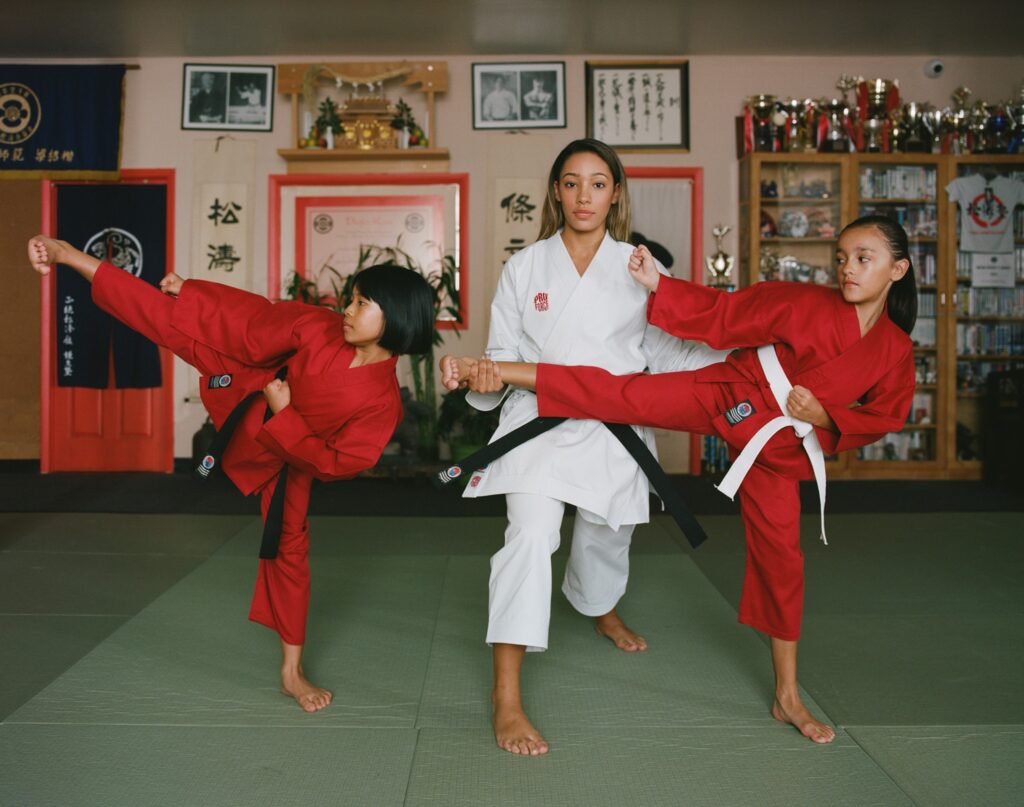
Karate Belts:
The most obvious purpose of karate belts is to represent a student’s rank. White, yellow, and orange belts represent beginner levels in karate. Blue, green, and purple are for intermediate students. And the brown, red, and black belt are for advanced students.
Belts can also be a celebration of a student’s progress and motivation for them to keep going in their training. For more information, see “The Levels of Karate Belts.”
Cross-Training Equipment
When you’re building your karate dojo, you also have the option of adding a dedicated cross-training space for cardio and strength training. This isn’t a necessity, but can provide added value for new students who are considering joining your gym. Size-friendly cross-training equipment options include a small selection of free weights, a small cable training station, medicine balls, kettle bells, a treadmill, and jump ropes.




